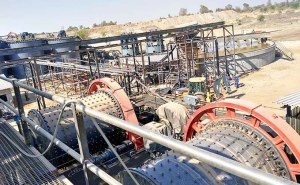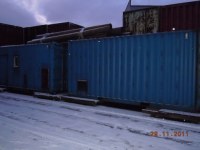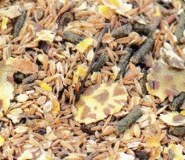Cement ball mill is the key equipment for recrushing the materials after they are primarily crushed. It is widely used for the dry type or wet type grinding of all kinds of ores and other grindable materials in cement, silicate product, new building material, refractory, fertilizer, black and non-ferrous metals and glass ceramic industry.
The harm of high temperature of grinding cement
1. Inducing dehydration of gypsum into semi-hydrated gypsum or even producing some anhydrous gypsum, causing pseudo-coagulation of cement, affecting the quality of cement, and easily causing agglomeration of cement in storage.
2. Seriously affect the process of storage, packaging and transportation of cement. Make the packaging paper bag brittle, increase the breakage rate, and deteriorate the labor environment of workers.
3. It is also unfavorable to the grinding machine itself. If the bearing temperature rises, the lubrication effect is reduced, and the cylinder body will generate certain thermal stress, causing the lining plate screw to break. Even the mill can not run continuously, endangering the safety of the equipment.
4. It is easy to make the cement coalesce due to electrostatic attraction, and it will adhere to the grinding body and the lining plate seriously, resulting in the ball-packing section, reducing the grinding efficiency and reducing the mill output.
5. Increasing the temperature of the material selected into the powder grinding mills, the adhesion of the inner wall and the fan blade of the powder separator is increased, and the electrostatic attraction between the material particles is stronger, which affects the dispersibility of the material after the material is discharged, and directly reduces the efficiency of the powder selection. Increase the cycle load rate of the grinding system and reduce the output of the cement mill;
6. The high temperature of cement will affect the construction performance of cement, resulting in rapid coagulation, large loss of concrete slump, and even easy to cause temperature difference stress in cement concrete, causing concrete cracking and other hazards.
Method for reducing the temperature of grinding cement
1. Reduce the temperature of the clinker
①Strengthen material management, avoid clinker with high temperature into the grinding head bin, and prevent red material from entering the grinding.
②Spray water in the cooler to reduce the clinker temperature.
③Spray water on the clinker belt. The above two water spray measures have obvious cooling effects, but there are also side effects, which should be used with caution.
2. Strengthening the grinding system The heat-dissipating grinding system has a large number of equipment and , and the surface for heat dissipation is large.
Strengthening the heat dissipation of the system is mainly to use the surface of the system to enhance the cooling and heat dissipation, such as spraying the atomized water to the outer sidewall of the classifier and making the water tank along the outside of the screw conveyor. Tests have shown that the cement temperature is reduced but not obvious, and it is easy to cause water in the equipment, which should be used with caution.
3. The addition of cement grinding aid grinding temperature reduction is conducive to increase the production time, while the increase in the production of Taiwan is also conducive to reducing the cement temperature. Aiming at the problem that the grinding system has a high temperature and the grinding phenomenon is severe and the powder selection efficiency of the powder separator is lowered, the cement grinding aid can reduce the degree of adhesion in the grinding machine and improve the efficiency of the classifier. Reduce the temperature of the cement.
4. Strengthen the ventilation of the mill to strengthen the ventilation of the mill, which can take away a part of the heat. However, according to the calculation of the heat balance of the mill, the heat taken away by the mill usually only accounts for 20% of the total heat rejection of the mill. The material temperature can be lowered. However, the ventilation in the mill is limited by the resistance of the system, the airlock, the air leakage, etc., and is also restricted by the fineness of the product. Therefore, it is necessary to reduce the temperature of the milled material by increasing the ventilation inside the mill. The limit.
5, using the mill cylinder water cooling in the small mill, usually using the cylinder water to reduce the temperature of the cement. According to the calculation of the heat balance of the mill, in the heat of the discharge mill, the heat radiated from the surface of the cylinder accounts for about 6% of the total heat, and therefore, its effect is limited. Moreover, after the large size of the mill, the surface area of the cylinder of the mill unit is much reduced, and the proportion of heat from the surface of the mill barrel to the total heat is getting smaller and smaller. The thickening of the mill cylinder steel plate and the thickening of the lining plate also hinder the heat conduction. The traditional method of watering the surface of the mill cylinder to improve the heat dissipation efficiency is limited, and the effect on the mill having a diameter larger than 3 m is very limited. And the efficiency of the cylinder surface is significantly reduced with the scaling of the cylinder surface (1 mm thick scale is equivalent to the thermal resistance of a 40 mm thick steel plate). The water on the surface of the cylinder wastes resources and pollutes the environment, so it is no longer used in large-scale grinding systems.
6. The use of cement cooler with cement cooler can greatly reduce the temperature of cement, and the cooling effect is better. The cement temperature of the cooler can reach below 70 °C, which is easy to operate and control. There are many types of cement coolers, such as vertical spiral lifting cement coolers, heat pipe chute type cement coolers, heat pipe fluidized bed cement coolers, and the like. Although the cement cooler has a good cooling effect, it also has some defects, so pay special attention when using it.
7. Adopting the internal spray cooling system The internal spray cooling technology has been widely used in foreign cement mills and is a mature means of cooling inside the mill. In order to greatly reduce the temperature of the cement, the most effective way is to use the internal spray cooling system. In theory, the spray can bring out the heat that it wants to bring out. It sprays the atomized water into the mill to rapidly vaporize it, absorbs the heat inside the mill, and then passes out the grinding belt inside the mill, especially when the mill is in a high temperature state, passing through the tail of the mill. The high-temperature zone is sprayed with atomized water, and the effect is immediate, which can ensure that the cement temperature is controlled below 95 °C, and the cement mill output can be increased by about 8%. In actual production, the key to the internal spray cooling system is to ensure safety and reliability.
Location : Tanxiang Road, High and New technical development zone,Zhengzhou city, China, 45000 Zhengzhou,
Contact : Linda Zhou, +18 1 03 71 26 16







